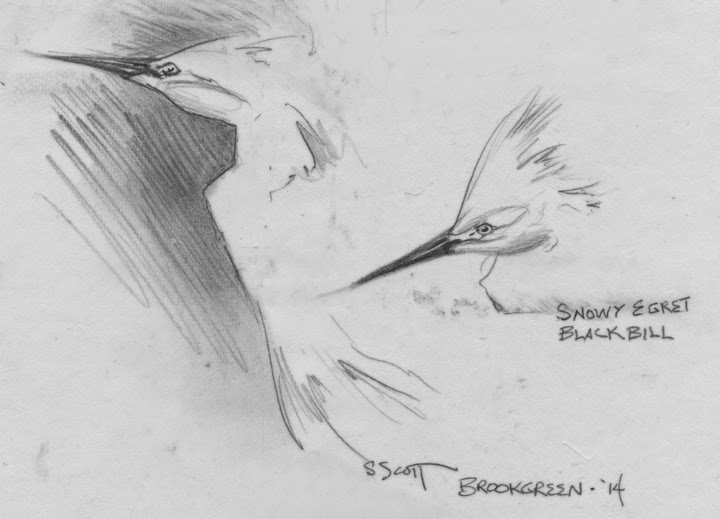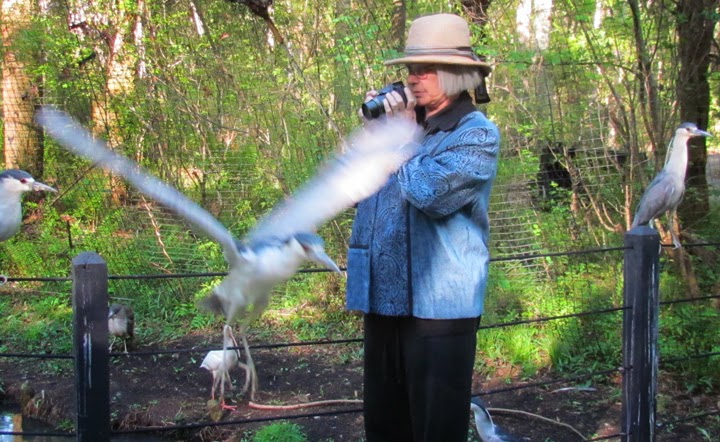Start this series with #522, April 16, 2014. http://www.brookgreen.org/
http://www.brookgreenworkshops.com
Peacocks and goats seem like an odd combination unless one visits Murrell's Inlet on the South Carolina coast.
Located only two miles from Brookgreen Gardens, it's where I enjoy great seafood and outstanding bird watching, sketching, and photographing while teaching my yearly bird sculpture workshop and attending board meetings.
Across from a favorite Murrell's Inlet eatery is Goat Island. Goats and peafowl have lived on the tiny 20,000 square foot island in harmony for many years and share their domaine with herons, egrets, pelicans, and ducks.
During hurricane evacuation, the goats and peafowl are taken off the island to safe ground.
Below, are photos of Goat Island residents taken from the deck while enjoying lunch last month in Murrell's Inlet.
Below, are sketches of a peacock that resides on Goat Island . . . the female of the species is called a peahen.
Peacocks and goats are among my favorite subjects. Below is a recent sculpture entitled,
Shade of Paradise. The sculpture was juried into the 2012 Birds in Art.
Shade of Paradise
13"H 23"W 11"D
Below, is a recent sculpture entitled, Tethered Goats. The sculpture was recently
purchased by the Briscoe Museum in San Antonio and is in their permanent collection.
Tethered Goats
8"H 14"W 9"D
Peacocks and goats seem like an odd combination unless one visits Murrell's Inlet on the South Carolina coast.
Located only two miles from Brookgreen Gardens, it's where I enjoy great seafood and outstanding bird watching, sketching, and photographing while teaching my yearly bird sculpture workshop and attending board meetings.
Across from a favorite Murrell's Inlet eatery is Goat Island. Goats and peafowl have lived on the tiny 20,000 square foot island in harmony for many years and share their domaine with herons, egrets, pelicans, and ducks.
During hurricane evacuation, the goats and peafowl are taken off the island to safe ground.
Below, are photos of Goat Island residents taken from the deck while enjoying lunch last month in Murrell's Inlet.
Below, are sketches of a peacock that resides on Goat Island . . . the female of the species is called a peahen.
Peacocks and goats are among my favorite subjects. Below is a recent sculpture entitled,
Shade of Paradise. The sculpture was juried into the 2012 Birds in Art.
Shade of Paradise
13"H 23"W 11"D
Below, is a recent sculpture entitled, Tethered Goats. The sculpture was recently
purchased by the Briscoe Museum in San Antonio and is in their permanent collection.
Tethered Goats
8"H 14"W 9"D
To learn more about the subjects in this blog go to the links below.
For a complete list of the blog subjects go to the Index Page and
type the subject in the Search This Blog link on right.























































